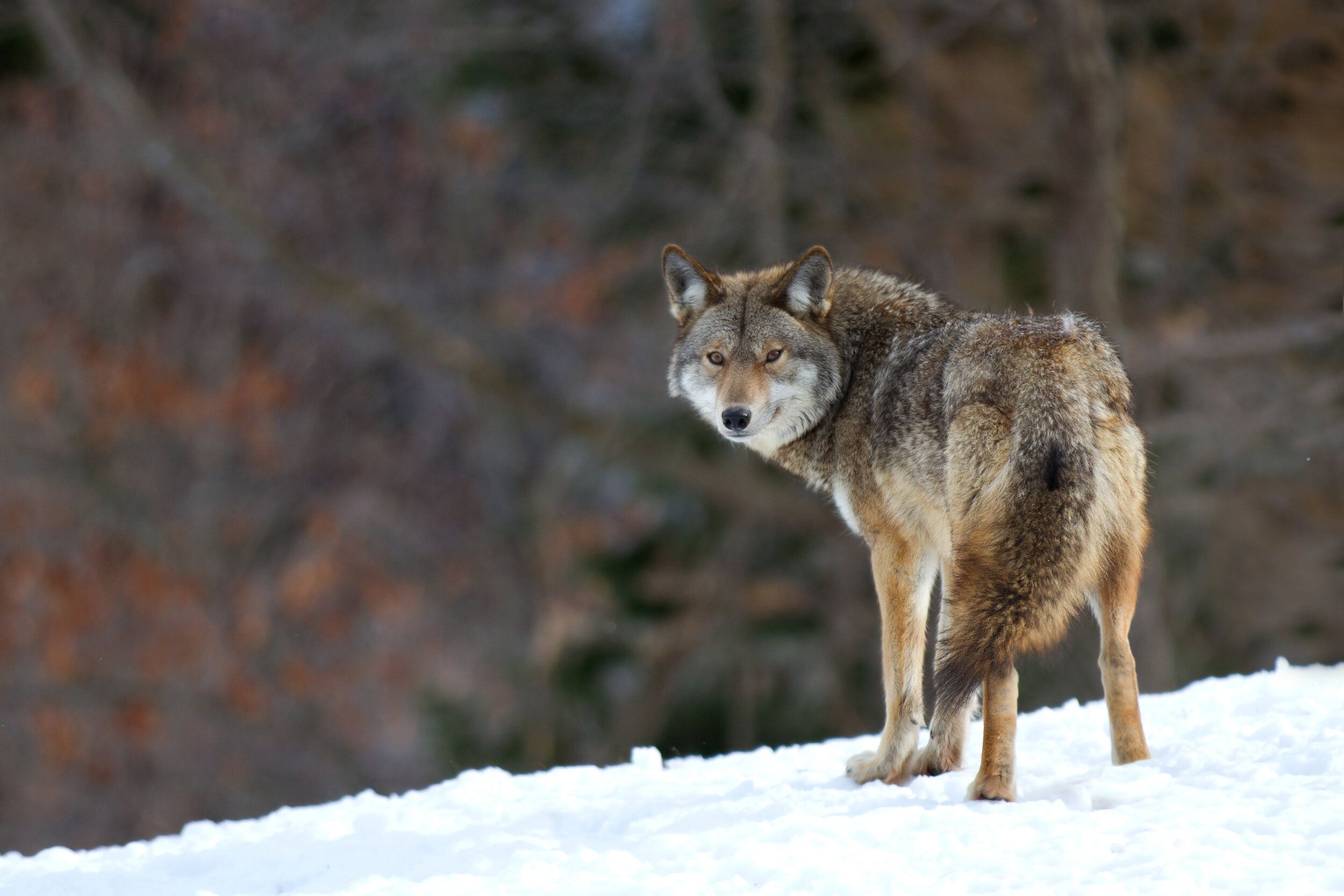Have you considered how to spend the whitetail off-season? For deer hunters, coyote hunting challenges their hunting ability, promotes hunting practice in the off-season, and protects vulnerable wildlife.
Coyotes are one of North America's most pervasive animals, an elusive and ever-adaptable predator. These animals eat almost anything, including rodents, rabbits, frogs, fish, and, most importantly to hunters, deer.
In the U.S., coyote populations are at an all-time high. The high numbers of coyotes directly impact decreased deer populations and increased spread of diseases such as mange, heartworm, and rabies. However, coyote hunting helps control populations and protect livestock to support ranchers, farmers, and the ecosystem.
Hunters are on the front line of managing a coyote population that would continue to expand and deplete wild game and livestock resources without keeping them in check. So, if you've never considered coyote hunting before or how it could improve your future success when hunting deer, here are five reasons to consider getting out in the field in the off-season to hunt coyotes.
1. Help Manage the Coyote Population
Coyotes have few natural predators due to the absence of other large predators like wolves, pumas, or mountain lions. Thus, coyotes have taken advantage of a lack of competition and expanded throughout most of the 50 states.
In the early 1900s, coyotes began significantly expanding their range across the country. Since then, coyotes have dramatically increased their habitat across North America more rapidly than any other North American carnivore. Now, hunters can find them in every U.S. state except Hawaii.
To manage the population of these predators, biologists study and track them, then adjust ongoing management goals accordingly. In locations where the population is increasing, harvest goals help maintain healthy numbers.
Deer hunters can participate in these harvest goals by hunting coyotes during the off-season. In most states, coyote hunting is allowed year-round – making it an ideal way to spend your time between whitetail and turkey seasons.
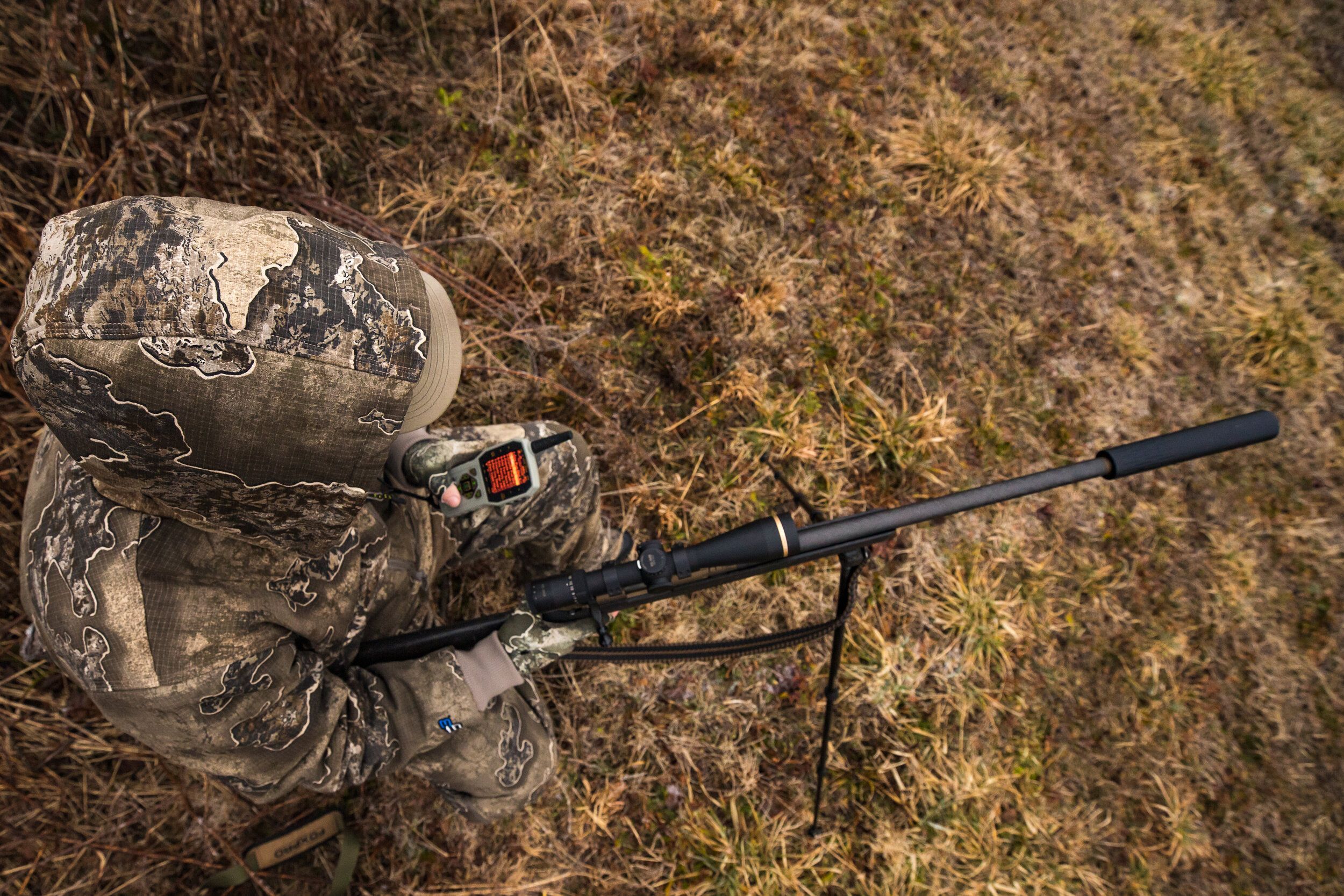
2. You Can Hunt Them Anywhere and Almost Any Time
As we noted above, hunters can engage in coyote hunting in nearly all 50 states. In most areas, coyotes are available to hunt year-round with no kill limit.
However, before heading out for a coyote hunt, check local regulations through the HuntWise app to make sure you follow the rules and hunt legally.
As winter hits and the whitetail season closes, deer hunters can use coyote season to hone in on calling, glassing, and shooting skills throughout the off-season. However, while you probably "can" hunt coyotes throughout most of the year, the best time of year for a successful hunt is during the winter season.
Coyotes become less nocturnal during the winter and colder temperatures as they search for food. You'll also find them traveling more in packs during winter compared to warmer seasons when they primarily travel alone.
No matter when you plan your hunt, remember that coyotes prefer open land over forest. Because bigger predators could sneak up on them in forests and kill them when competing for food or territory, coyotes prefer open land vs. the woods.
Coyotes Invade Urban Areas, Too
Coyotes are not just rural animals. While you probably think of them mainly in the wild, they have adapted to live within human habitats in many areas, making urban and suburban spaces their own.
While hunting in urban areas may come with more regulations, you'll find large populations of coyotes in cities like Chicago, New York City, Los Angeles, and Seattle.
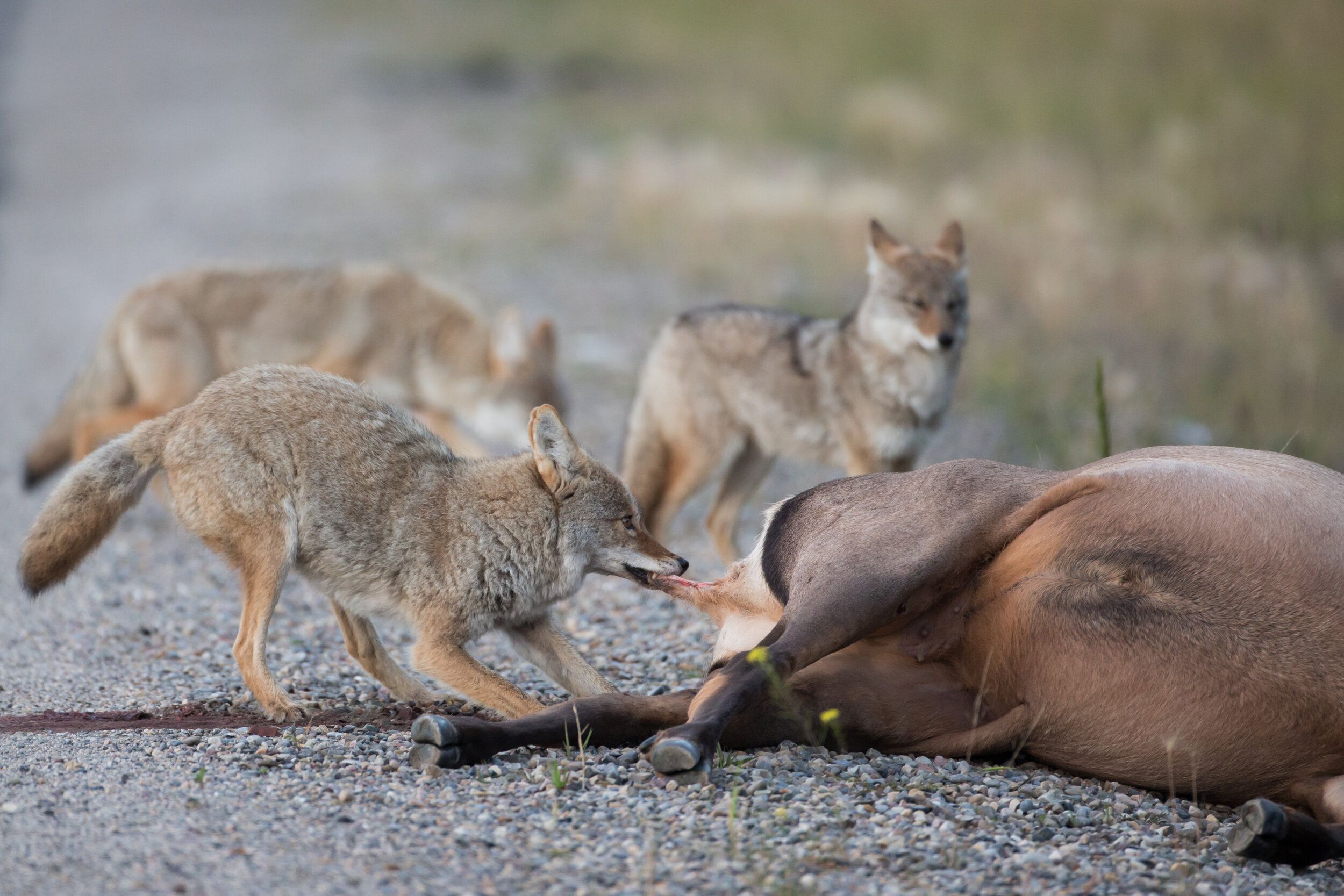
3. Help Deer and Small Game Populations Thrive
Growing and pervasive coyote populations significantly impact wild game and livestock populations.
In the spring, coyote pups are born. Male coyotes hunt and return with food for female coyotes and their pups. At the same time of year, mule deer, whitetail fawns, and elk calves are born.
Throughout the spring, coyotes are typically the largest source of fawn mortality. In various studies, high coyote populations lead to high fawn mortality rates, often taking a heavy toll on whitetail fawns and, ultimately, the overall whitetail population. With well-honed hunting skills, coyotes are a significant threat to fawns and even adult deer who can't escape a chase or quick strike from a stalking coyote.
However, eliminating coyotes has been known to increase the survival of fawns significantly. Coyote hunting helps preserve young fawns, helping them grow into adult deer that later become eligible for you to tag during a future whitetail season.
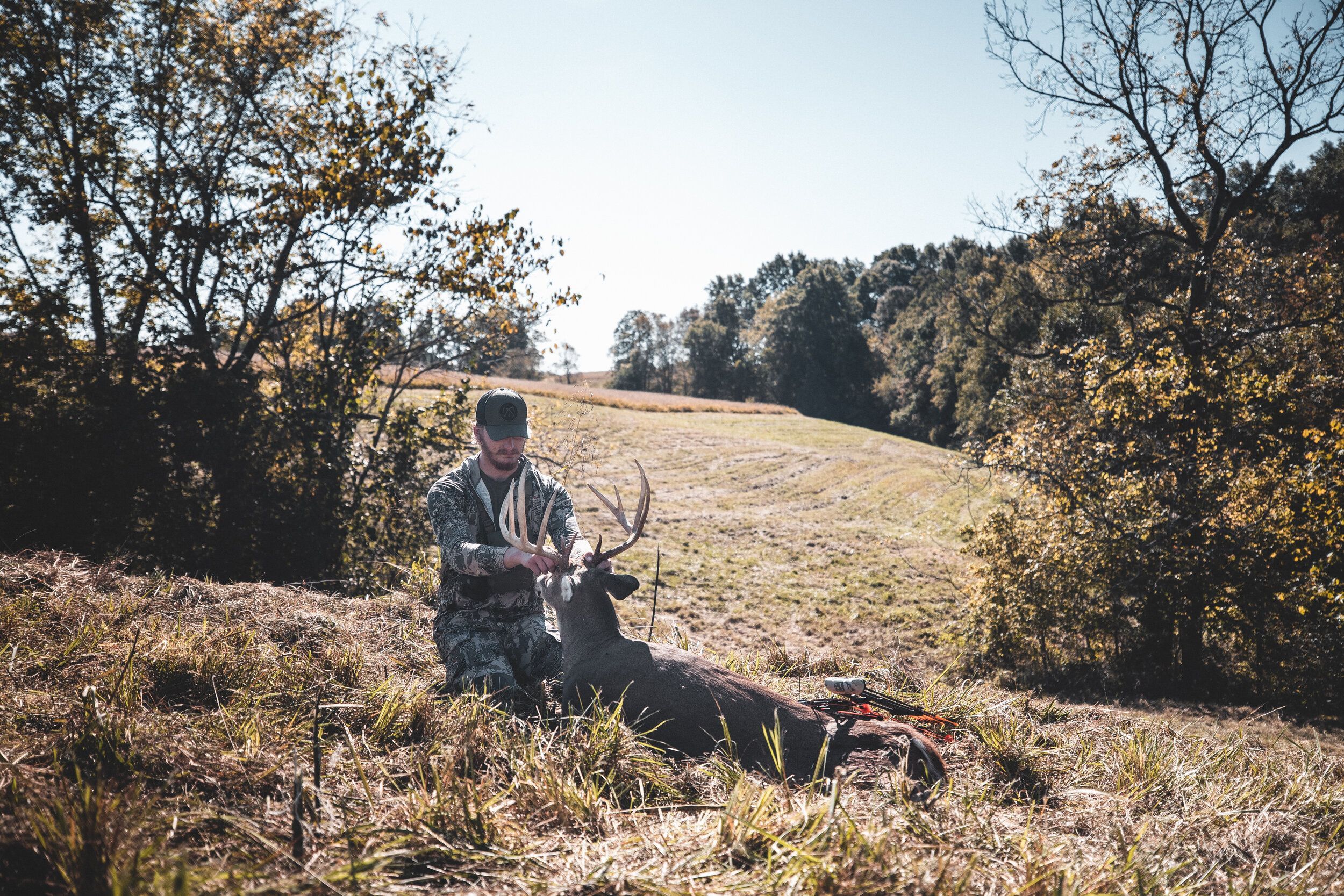
4. Coyotes Impact Deer Hunting Strategy
Whether bowhunting or using a rifle, leaving a "gut shot" or poorly hit and wounded deer overnight to die or recover and escape can be the perfect opportunity for a coyote to steal your kill.
In many states, hunters report coyotes on the kill just minutes after they take down a deer. So, in areas with strong coyote populations, bowhunters can no longer leave their wounded deer overnight.
Whether the weather is too cold to track a wounded deer or it's too late and dark in the evening to carry it out, it's no longer an option not to pursue the injured animal and bring it back to camp.
The adaptable nature of coyotes means they are proficient at tracking deer wounded by hunters. They are smart enough to realize that the animal you wound is an easy dinner for them. So, hunters have to adapt.
Next-day recoveries may no longer be an option for your trip. Plan to carry your dear out as soon as you can after killing or wounding the animal. Not only do you save your kill, but you also help discourage coyotes from sticking around for the potential of an abandoned wounded animal.
However, if you participate in controlling the coyote population through coyote hunting during the off-season, you'll have fewer coyotes to compete with for your downed deer.
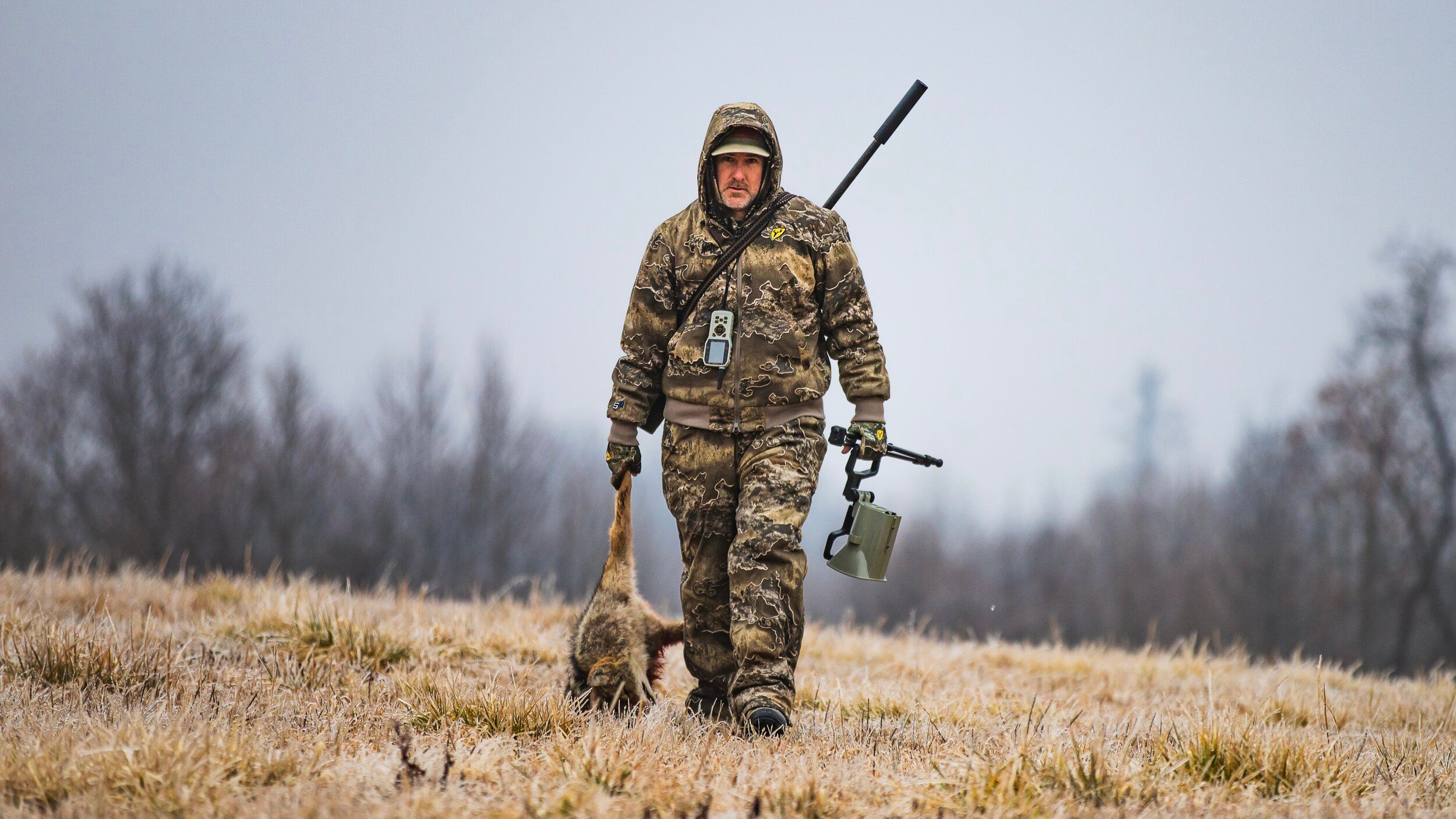
5. Stay Active Throughout the Offseason
Ready to challenge yourself? Hunt coyotes!
These animals are among the most challenging to track and kill. They are smart, stealthy, and opportunistic. Coyotes have incredibly keen eyesight and, like any animal coming to a call, will look hard for its source.
Coyotes are also adept at remaining unseen, especially in dense undergrowth or thick woods that provide excellent cover. Even if you see a few coyotes during deer season, you will likely see only a small fraction of the coyotes around you.
Despite this, coyote hunting is not impossible. It is an excellent opportunity for deer hunters to become proficient in scouting, playing the wind, and calling.
Coyotes are hyper-aware of their surroundings, challenging deer hunters to adjust their strategy and hunt smarter. Additionally, coyote hunting helps deer hunters become more familiar with hunting areas.
Taking time in the off-season to walk and get to know the terrain helps you improve your scouting and hunting success for other wild games, like whitetail and turkey.
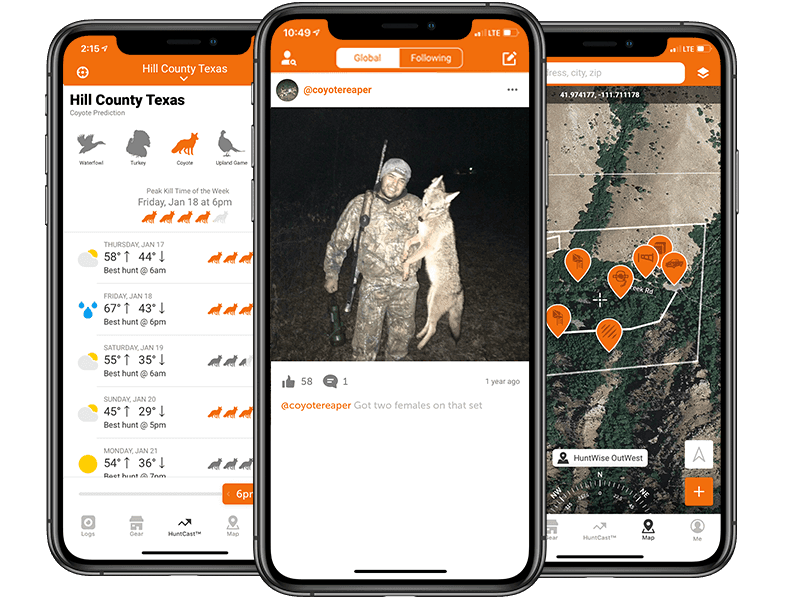
Use HuntWise to Hunt Coyotes After Deer Season
Before planning your first (or next) coyote hunt, download the HuntWise app. With real-time wind tracking, the latest satellite imagery, a range of base layers and topographic maps, and species-specific forecasts in your hand, hunters can improve their coyote hunting success.
No matter the season or location, coyote hunting presents opportunities for you to grow as a hunter. Success when hunting these animals requires a sound strategy and the right tools, like HuntWise.
We hope you'll use these five reasons for deer hunters to hunt coyotes, grab your free download of the HuntWise app, and challenge yourself during the off-season!
Content updated February 13, 2024.
